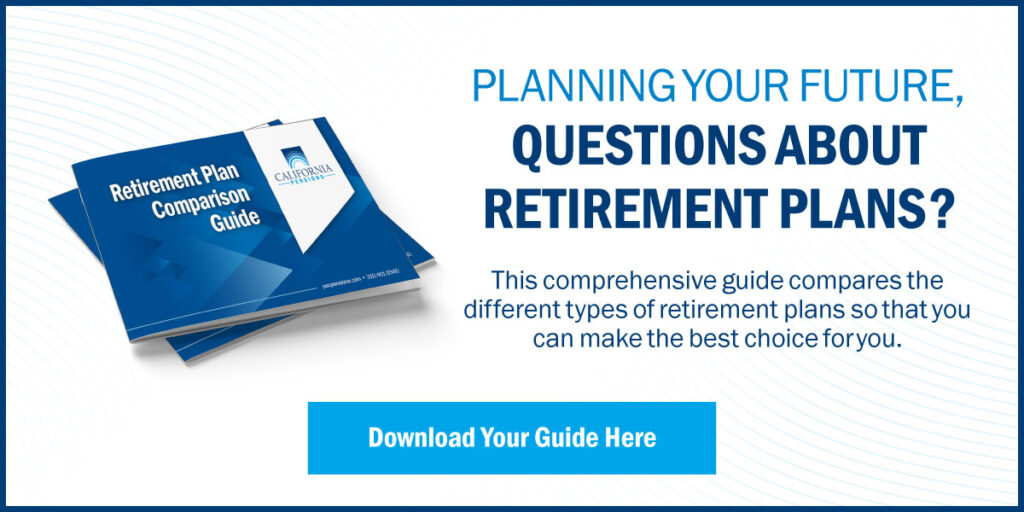This article discusses ways for a TPA to keep experienced workers skills up to date and how to develop the knowledge and skills of new employees.
Scene: A non-descript third-party administration (TPA) office somewhere in America. A TPA business owner is with her operations manager. They are speaking earnestly about a how to train staff, especially new hires.
Owner: How do we bring everyone up to speed on the new regulations in a cost-effective and efficient manner? I am most concerned with Madison and Grayson, who we just hired this past year.
Operations Manager: I think we need more than just an email from one of us. If it was just Betty or Jennifer, I have an idea about what we could do to engage them. But these newer hires don’t respond in the same way.
Owner: Agreed.
The owner and the operations manager stare at each other in silence. Fade to black.
All across the country, TPA business owners and managers play out some version of that scene on a routine basis. We look for ways to engage our more experienced workforce to keep their skills relevant and up to date.
But, one of the other greatest challenges we face as an industry is how do we bring newly recruited employees “into the fold” to be effective administrators. As we work to expand our employees’ knowledge, we are faced with both challenges and opportunities, oftentimes from the same set of circumstances.
Generational Differences
It is helpful to describe some key factors in learning differences between different generations. While certainly not monolithic, successive generations do display some broad-based training and development trends.
A major challenge facing the workplace is a direct result of generational outlook. For the first time in US history, we have five different generations with a significant presence in the workforce. While differences are not as exaggerated as commonly shared anecdotes might suggest, the various generations diverge in terms of how they communicate and learn.
Data compiled by numerous sources, including Purdue University demonstrate that older generations (Silent and Baby Boomers) tend to favor methods of learning that are in a classroom or seminar setting. [“Generational Differences in the Workplace.” Purdue University – Global, 2024, https://www.purdueglobal.edu/education-partnerships/generational-workforce-differences] Learning and development tends to be top-down and hierarchical. These generations accept what a higher authority instructs them. They also are more willing to work after hours to partake in learning opportunities. Traditional seminars, conferences, and even webinars are where this group tends to derive the greatest education benefit. Professional organizations, such as the American Society of Pension Professionals & Actuaries (ASPPA) and the National Institute of Pension Administrators (NIPA) have traditionally provided numerous opportunities in the in-person training space, and these older generations are still consumers of this knowledge transfer format.
Generation X grew up as the “latchkey kid” generation. The ethos of self-reliance directly impacts how they approach training and the learning process. Gen Xers typically do not have the same respect for authority as previous generations, and therefore approach learning with a degree of skepticism. They expect to challenge the status quo if they do not think it is working. They exhibit a strong preference for on-the-job experiential learning, as opposed to a classroom setting. As noted in an article from the Training Journal, Gen X prefers to have any learning provided in a framework with options that can be individually selected based on the needs of the student. Basically, tell them the end goal and allow them to select the means to get there. [Sarah Cook and Steve MacAulay, “Learning and Development: Across the Generations,” Training Journal, March 21, 2017, https://www.trainingjournal.com/2017/business-and-industry/learning-development-across-generations/] “Roadmaps,” where learners can see where the goal is and suggestions on how to get there speak well to this cohort. They appreciate check-ins by knowledgeable mentors, but do not want to be closely managed. They view training and education as a way to better themselves in a professional capacity, not to necessarily advance the interests of a company or organization.
Generation Y or Millennials are now the largest generation in the work force. This generation is characterized as being achievement-oriented. They approach learning scenarios as a challenge with a reward at the end. They expect continual feedback and communication. In sharp contrast to Gen X’s lone wolf approach, a hallmark of Millennial education preferences is the desire to learn in collaborative communities. They prefer to be guided in their educational endeavors and for learning opportunities to be efficient, even if it means breaking with longstanding norms. Millennials also are the first generation to be fully online and “digital-first.” While previous generations can master technology, Millennials are at home using digital tools to learn.
Generation Z is the latest generation to hit the work force. They are even more immersed than Millennials in the digital space. They show strong preferences for digital learning tools and new technologies. There is an expectation of customization to their education experiences that previous generations did not possess. Gen Z expects technology to direct them to skill areas they need to enhance and then lead them to materials to do so.
So much of the educational infrastructure in the retirement industry is designed around the learning paradigms of more senior members of the workforce. This is not surprising, as education providers and even internal company training programs had to address the needs of the work force at the time. Traditional seminar training sessions, whether in person or online, are still the most common way to deliver educational content. The question arises: Does this method address the industry’s newest members in a manner that takes into account how best to tailor content?
After exploring how different age groups react to training and professional education, we should take note of other factors that impact employee training. Understanding these different views and needs helps us frame how we must adapt in delivering material to our target audiences.

Remote Work
Remote work brings a unique set of challenges from a training perspective. For decades, new retirement industry professionals were co-located with more seasoned professionals. Over the past decade, and accelerated by the COVID-19 pandemic, more and more TPA firms have become hybrid or completely remote in their operations. These business configurations have well-documented benefits for employees and employers alike. However, from a training perspective, the lack of co-location of employees in different stages of their careers does not lend itself toward easy transfer of knowledge. While in the past, a junior employee could sit next to or drop into a mentor’s office for a quick question, remote work puts up barriers to such free flow knowledge transfers. While video conferencing, instant messaging, and other electronic communications allow easy communication, proximity can allow for more spontaneous insights and the sharing of subtlety and nuance inherent to third-party administration. Sharing “water cooler moments” and lunchtime discussions of obstacles and challenging cases expand the opportunities to teach at a more holistic level.
Conversely, remote work offers the ability for learners to pull in individuals without geographic limitations and from other companies to their professional development networks. A video conference with the ability to share ideas and materials regardless of location is a significant advantage to a closed shop environment. Remote work also offers the ability for companies to offer a consistent training environment to all individuals.
Technology
Over the past few decades, the technology available to retirement industry practitioners has advanced by leaps and bounds. Many newer employees can develop a dependency on automation and artificial intelligence (AI). This presents challenges when they are looking to advance their skill sets. If administrators lose the skills to (at least, theoretically) calculate things “by hand,” they simultaneously lose the chance to develop their consulting muscles. In order to give effective recommendations to plan sponsors about plan design, newer employees must learn how to review results and make adjustments to assist plan sponsors to reach their goals.
Enhanced technology does allow for newer generation administrators to be trained in ways that speak to their learning goals and methods. For example, these generations are partial to receiving customized content. With ever increasing sophistication of technology, it will be easier for educational programs and companies to customize learning programs tailored specifically to the learners. As demonstrated by apps such as Duolingo for language learning, technology can be used to specifically target areas of weakness in a new administrator’s skill set. Imagine if an administrator had issues with interpreting Internal Revenue Code (Code) Section 401(a)(4) results but showed strong skills in identifying Section 414(s) issues. AI could direct a new administrator to resources to help the learner with reviewing the former while not emphasizing the latter.
Returning to our Duolingo comparison, new education technologies also can be used to satisfy the desires of these generations to be both collaborative and rewarded through gamification. In that application and others like it, learners team up to go on “quests” and earn rewards. For the retirement plan industry, it is not too far a leap for educational organizations to apply these principles to a host of topics. Rules for withdrawals, different ways to calculate eligibility, and understanding vesting, among many other skill areas, could all be gamified to teach in lieu of the old rules of repetition and practice. The added benefit of using a practice environment would be that no live plan participants’ accounts would ever be impacted by a mistake.
Technology also has the ability to put vast resources into the hands of learners at a reasonable cost to employers. New administrators would not need to be tied to one copy of the blue, leather-bound Pension Answer Book that so many of us were dependent on early in our careers. Online resources with smart search functions, and some with the ability to ask questions, is a vast improvement from what prior generations had on hand.
Consolidation and Financial Pressures
Another area that plays into the challenges and opportunities of employee training is directly tied to how the industry, itself, is changing. Over the past decade, we have seen large numbers of formerly independent TPA firms and recordkeepers consolidate. Larger organizations may not be willing to invest in a holistic approach to education for their staff. If someone is going to be processing distributions only, does the organization realize a return on investment by providing educational opportunities for other topics such as testing or document rules? Likewise, independent TPA firms have to look at fee compression, which has shrunk education budgets, even if they still subscribe to the idea of providing a more holistic educational experience.
In larger cities, there may be a local organization to assist in training and development, but for a number of TPA firms, in-person seminars and conferences carry large expenses for the program themselves, the travel, and the opportunity cost of time away from work and generating revenue.
On the flip side, consolidated providers also have the ability to invest in programs on a much larger scale than small firms. A 10,000-plan provider can spread educational costs out over many more plans at a less significant cost. Likewise, many of these organizations can develop internal learning mechanisms that are outside the reach of smaller firms or even trade organizations.
As noted above, many companies in the industry have changed the way tasks are assigned among staff. Many firms now organize along functional lines, as opposed to cases. Programs that are specialized to specific tasks are common now, but will likely become more prominent and important in the future. Education programs must be designed along modular lines so employees and companies can consume the specific skill sets needed.
Takeaways
As we look for ways to train new administrators coming into the field, we must not forget the needs of our older generation workers. This includes not only continuing education, but bringing new hires on-board, perhaps some with analogous experience in other industries prior to working with retirement plans. The easy answer is to say “all of the above” when it comes to methods for training, but that idea is both unrealistic and simplistic. Organizations do not have unlimited budgets for education.
We must look to our training programs to be smarter and with elements designed to cross generational, company, and learning goals. As we look to the future, we must weave digital delivery with interactive elements. Education modules should both be precise in scope and able to be combined to form a more comprehensive program.
Existing structures and organizations have served our industry well in the past. As we look to remain relevant and valued in a larger society that lacks an appreciation for our function, we must embrace the opportunity to adapt our training and education approaches. By doing so, we will continue to attract the best and brightest talent to maintain the integrity and viability of the private retirement system.
By William A. L. Barbato, M.Pl., ERPA, APA,QPA, APR, AKS, QKA, has been a part of the retirement plan industry since 1997 and is currently Chief Operating Officer of California Pensions, a TPA. He holds various professional designations from both NIPA and ASPPA and is an ERPA. He serves as Chair of the NIPA Professional Development Committee.

Copyright © 2025 CCH Incorporated. All Rights Reserved.
Reprinted from Journal of Pension Benefits, Spring 2025, Volume 32, Number 3,
pages 30–32, with permission from Wolters Kluwer, New York, NY,
1-800-638-8437, www.WoltersKluwerLR.com



